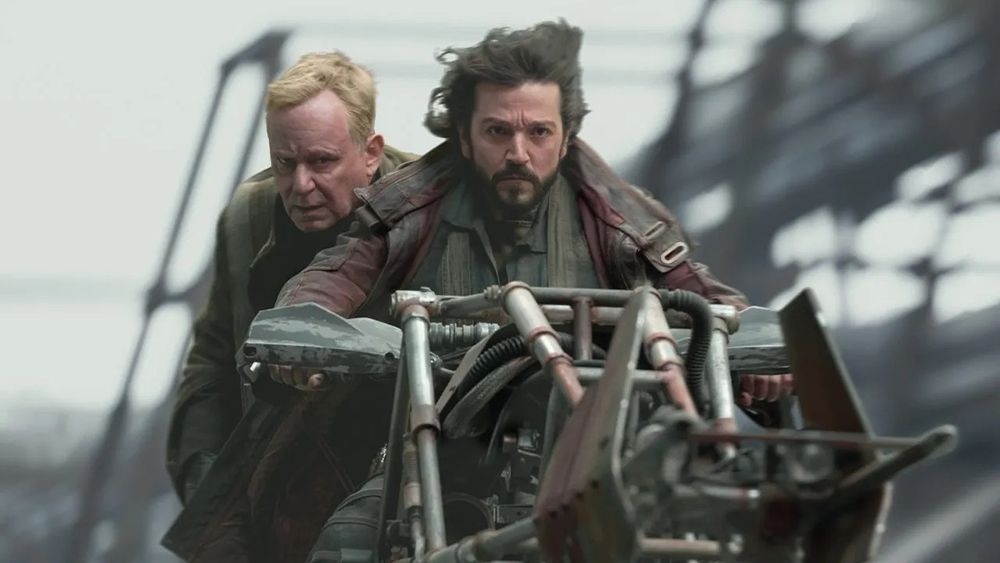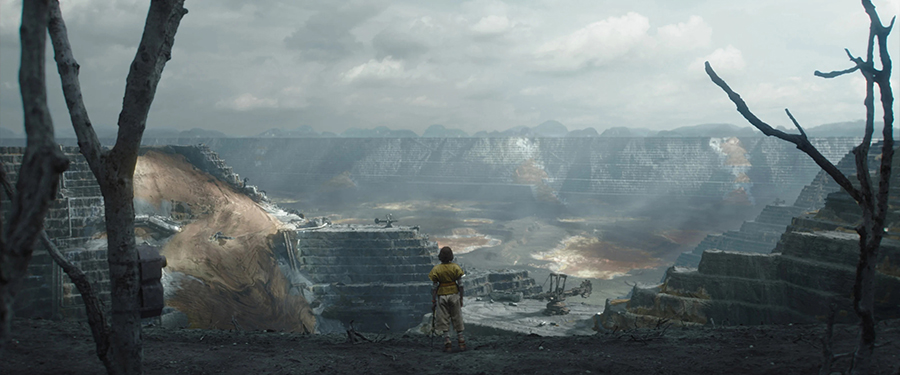Andor: The Rogue Legacy Identity Supremacy

In case the pun in the title was too subtle or obscure, the new Disney+ Star Wars series Andor is created by Tony Gilroy, who co-wrote the movie in which Cassian Andor first appeared, Rogue One: A Star Wars Story. Gilroy also wrote the screenplays for the first three Matt Damon Jason Bourne movies. What this means for Andor is the series actually has — perhaps for the first time in a Star Wars property — believable dialogue. Also, an intriguing story and some excellent science fiction world building that adds to the sense of immersion.
Below is my spoiler-free review of the first four episodes of Andor, of which I was lucky enough to get a review screening. The series premiers on Disney+ tomorrow, Sept, 21, with the first three episodes.
Let’s start with that dialogue. Gilroy might be the master of making conversations between bureaucratic functionaries interesting, entertaining and working in service to the plot. His security staff and Imperial officers are every bit as engaging as his Treadstone intel analysts or field office managers in the Bourne movies. I think that’s because Gilroy treats everyone who speaks as a real person, in contrast to, for example, the dialogue among the Inquisitors in Obi-Wan Kenobi. Those characters were vehicles for portraying the Empire’s evil, and never treated as actual persons, so they never talked like any living person ever would.
It doesn’t hurt that the casting directors got some of the best character actors working in British TV to deliver that dialogue, in addition to known stars like Stellan Skarsgård, Adria Arjona and of course Diego Luna reprising the role of Cassian Andor. You’ve seen many of them — Alex Ferns who was Commissioner Savage in The Batman, Rupert Vansittart who was stalwart Stark bannerman Yohn Royce in the latter seasons of Game of Thrones, even Lee Boardman who played Timon in Rome. And even though he isn’t listed in IMDb.com’s Andor entry, one important senior Imperial officer is played by Anton Lesser, Cersei’s renegade Maester Qyburn from Game of Thrones.
Just four episodes in, Skarsgård is the standout performer in the series. If he doesn’t win Best Supporting Actor in next year’s Emmy Awards, it will be a crime.

Kudos also need to go to Supervising Art Director Toby Britton (Tenet, Dunkirk) and Senior Art Director Su Whitaker (the mind-bending Trance) for making both the grungiest lived-in and most beautiful settings in Star Wars history. Seriously, I haven’t wanted so much to live in a fake apartment like Sen. Mon Mothma’s in Andor since I watched Nightmare Alley.
You might notice I haven’t said much about star Diego Luna. That’s because the series is about Andor being recruited as a Rebellion spy and saboteur and is set five years prior to the events of Rogue One. But he is already world-weary, and his character isn’t really fleshed out much in these first four episodes. I look forward to seeing Luna get to use his acting chops more, but even if he remains the sullen audience POV character throughout the series, the rest of the cast, the world and the story more than carry the weight.
It needs to be noted that Andor is the most mature property in the Star Wars universe since, well, Rogue One. That doesn’t mean “blasters and tiddies” like Game of Thrones and its “dragons and tiddies.” Andor is much more serious than other stories in the filmed Star Wars canon. There is a greater sense of danger and risk, undoubtedly in part because there are no space wizards with superhero powers and magic swords — at least not so far.
OK, I have to close this out by going back to the dialogue. In the first episode (I think — might have been Ep. 2 but I can’t check any more as the screener link is closed) there is a 3–4-minute dialogue scene between a corporate security chief and one of his officers that dumps exposition that adds story background, moves the story along and does some world building. However, it also shows us how different these two personalities are, how they see their world differently and makes you want to see more of them on the screen. Unlike most exposition dumps, these two characters are not personality free mouthpieces, but actual characters. It is a master class in writing exposition dialogue scenes.
If you liked Rogue One, you’ll like Andor. And if you liked the first three Bourne movies, you’ll love Andor. I give Andor (tentatively, based on just four episodes) an 8 out of 10. (Edit: After the finale, I’m changing the rating to 9.5 out of 10. It’s not just great Star Wars content, it is transcendent TV. Think HBO’s Watchmen or The Wire.)
If you like our work and want to show your appreciation, feel free to tip us at Ko-fi or become a patron on Patreon.



